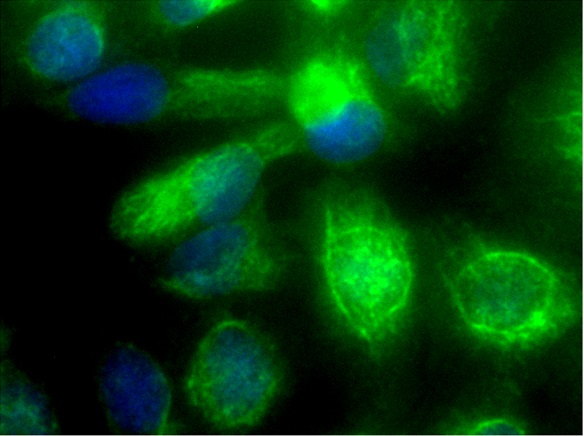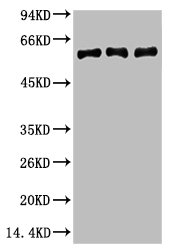Mouse anti Vimentin
MUB1900P
ApplicationsFlow Cytometry, Western Blot, ImmunoCytoChemistry, ImmunoHistoChemistry, ImmunoHistoChemistry Frozen, ImmunoHistoChemistry Paraffin
Product group Antibodies
ReactivityCanine, Chicken, Hamster, Human, Mammals, Monkey, Mouse, Porcine, Rat, Xenopus, Zebra Fish
TargetVIM
Overview
- SupplierNordic-MUbio
- Product NameMouse anti Vimentin
- Delivery Days Customer7
- Application Supplier NoteRV202 is suitable for immunoblotting, immunocytochemistry, immunohistochemistry on frozen and paraffin embedded tissues and flow cytometry. Optimal antibody dilutions should be determined by titration; recommended range is 1:100 - 1:200 for flow cytometry, and for immunohistochemistry with avidin-biotinylated Horseradish peroxidase complex (ABC) as detection reagent, and 1:100 - 1:1000 for immunoblotting applications.
- ApplicationsFlow Cytometry, Western Blot, ImmunoCytoChemistry, ImmunoHistoChemistry, ImmunoHistoChemistry Frozen, ImmunoHistoChemistry Paraffin
- Applications SupplierFlow Cytometry;Immunocytochemistry;Immunohistochemistry (frozen);Immunohistochemistry (paraffin);Western Blotting
- CertificationResearch Use Only
- ClonalityMonoclonal
- Clone IDRV202
- Gene ID7431
- Target nameVIM
- Target descriptionvimentin
- Target synonymsvimentin, epididymis secretory sperm binding protein
- HostMouse
- IsotypeIgG1
- Protein IDP08670
- Protein NameVimentin
- SourceRV202 is a mouse monoclonal IgG1 antibody derived by fusion of SP2/0-Ag14 mouse myeloma cells with spleen cells from a BALB/c mouse immunized with a cytoskeletal vimentin extract of calf lens.
- ReactivityCanine, Chicken, Hamster, Human, Mammals, Monkey, Mouse, Porcine, Rat, Xenopus, Zebra Fish
- Reactivity SupplierCanine;Chicken;Caprine;Hamster;Human;Monkey;Mouse;Rat;Swine;Zebrafish;Xenopus
- UNSPSC12352203







